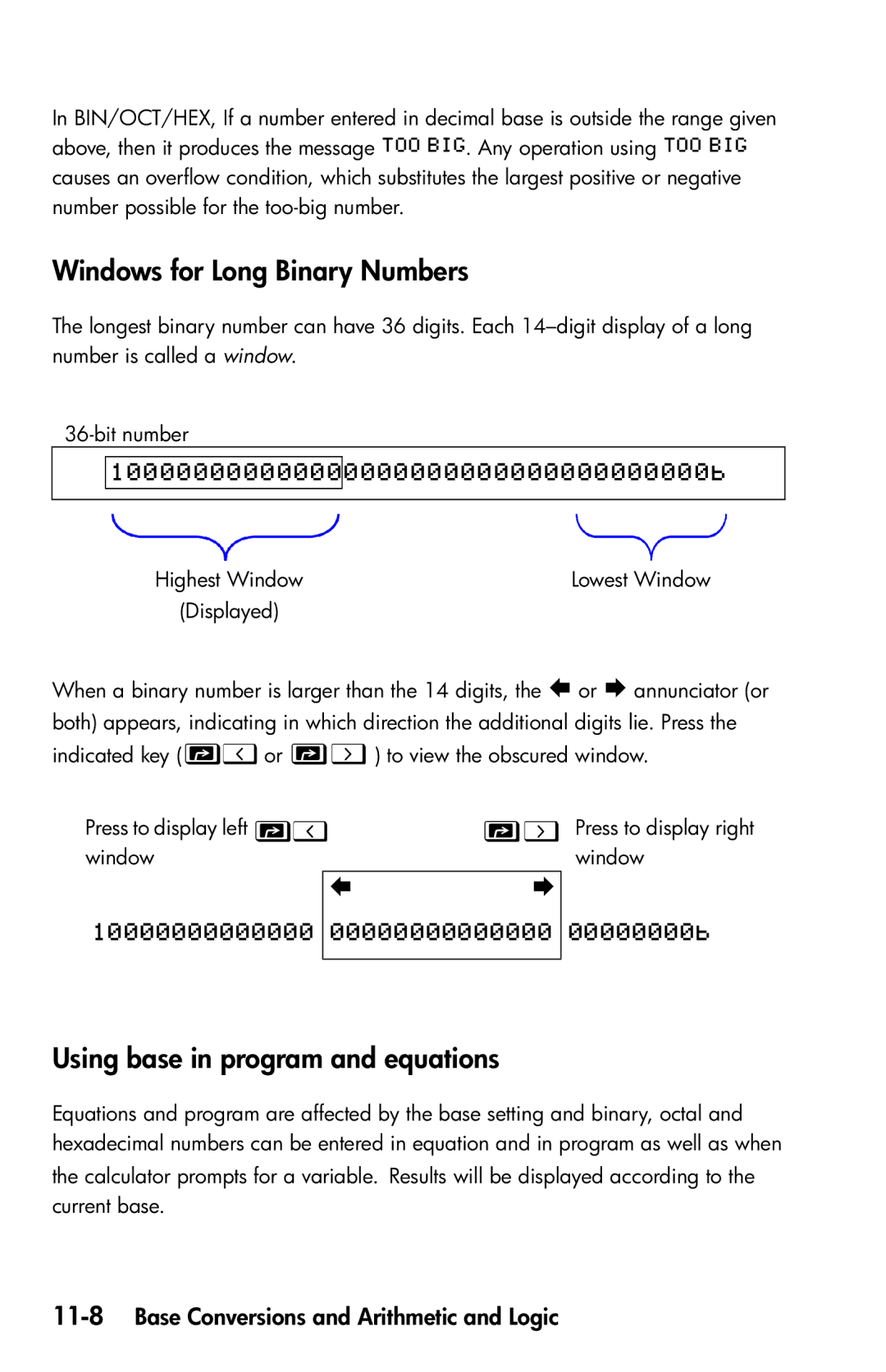
In BIN/OCT/HEX, If a number entered in decimal base is outside the range given above, then it produces the message . Any operation using causes an overflow condition, which substitutes the largest positive or negative number possible for the
Windows for Long Binary Numbers
The longest binary number can have 36 digits. Each
Highest Window | Lowest Window |
(Displayed) |
|
When a binary number is larger than the 14 digits, the or annunciator (or both) appears, indicating in which direction the additional digits lie. Press the indicated key (Öor Õ) to view the obscured window.
Press to display left Ö | Õ Press to display right |
window | window |
Using base in program and equations
Equations and program are affected by the base setting and binary, octal and hexadecimal numbers can be entered in equation and in program as well as when the calculator prompts for a variable. Results will be displayed according to the current base.
